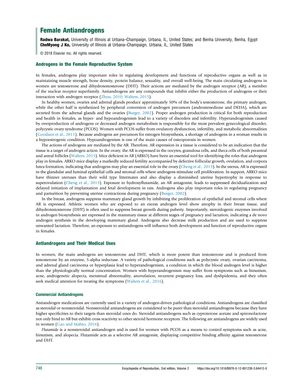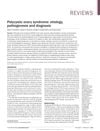Female Antiandrogens: Significance, Treatment, and Environmental Concerns
October 2017
in “
Elsevier eBooks
”
androgens antiandrogens PCOS hirsutism acne androgenetic alopecia hormone therapy steroidal antiandrogens nonsteroidal antiandrogens flutamide cyproterone acetate spironolactone natural antiandrogens testosterone synthesis DHT endocrine disrupting chemicals DEHP BBP vinclozolin procymidone DDT DDE methoxychlor linuron polycystic ovary syndrome androgenic alopecia hormone replacement therapy Dihydrotestosterone endocrine disruptors

TLDR Antiandrogens can treat female hormonal conditions, but environmental ones may harm reproductive health.
The document from 2018 examines the significance of androgens in female reproductive health and the use of antiandrogens to treat conditions such as PCOS, hirsutism, acne, androgenetic alopecia, and in hormone therapy for transgender women. It differentiates between steroidal and nonsteroidal antiandrogens, like flutamide, cyproterone acetate, and spironolactone, and discusses the growing interest in natural antiandrogens for their potential to treat hyperandrogenism by inhibiting testosterone synthesis or reducing DHT levels. Additionally, the document raises concerns about endocrine disrupting chemicals (EDCs) like DEHP, BBP, and vinclozolin, which have antiandrogenic effects and may cause long-term health issues. It also reviews the impact of various synthetic chemicals, such as procymidone, DDT, DDE, methoxychlor, and linuron, on reproductive health and development, noting that while androgens are essential for female reproductive function, the presence of synthetic antiandrogens in the environment poses a risk that requires further investigation and public awareness. The document's conclusions are supported by a substantial study involving over 2000 American women.
